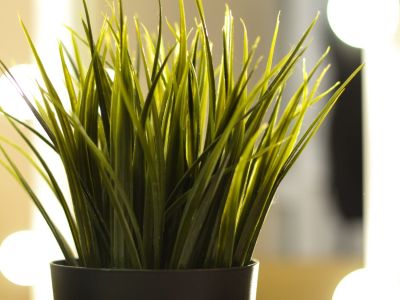The Right Seed for Indoor Grass
Typical types of grass that grow in lawns don’t work well for a grass houseplant. Each blade of grass outdoors needs a good bit of room to grow. Although the grass looks uniform and close together, the blades really are spread apart for the size of grass blades. With indoor grass, you’ll want the seed to grow in a smaller potted area. There are many types of grass for growing indoors. Wheatgrass is an excellent choice for indoor grass, but other fast-growing varieties such as rye or oats work as well. These grass varieties need to thrive at more moderate temperatures, which isn’t the case with most species of grass.
The Right Light for a Grass Houseplant
Another problem with most varieties of grass is that they need more light to grow than they will find indoors. A couple of easy solutions present themselves. Wheatgrass, again, works extremely well because it doesn’t require much light. In fact, wheatgrass needs to be in the shade if grown outside. The general rule for wheatgrass indoors is that it will grow anywhere you have other houseplants. Other varieties of grass should be put in strategically selected windows to maximize the sunlight they receive. If these options won’t work, you also can use a plant light for your grass houseplant. These lights are inexpensive and hang low over trays to help plants grow, but they are inconvenient for use with ornamental indoor grass plots.
The Right Care for Your Grass Plant
Once you have the seed and light issues worked out, you are ready to begin growing grass indoors. The care for indoor-quality grass seeds is minimal. Wet the soil with a sprayer before you lay down the seed and then check the soil for dampness for the first week. After that you can just dampen the soil at regular intervals, but most grass varieties will grow well without much interference from you. Now that you know the answer to “Can grass grow indoors?”, you can start growing grass indoors in your own home.
